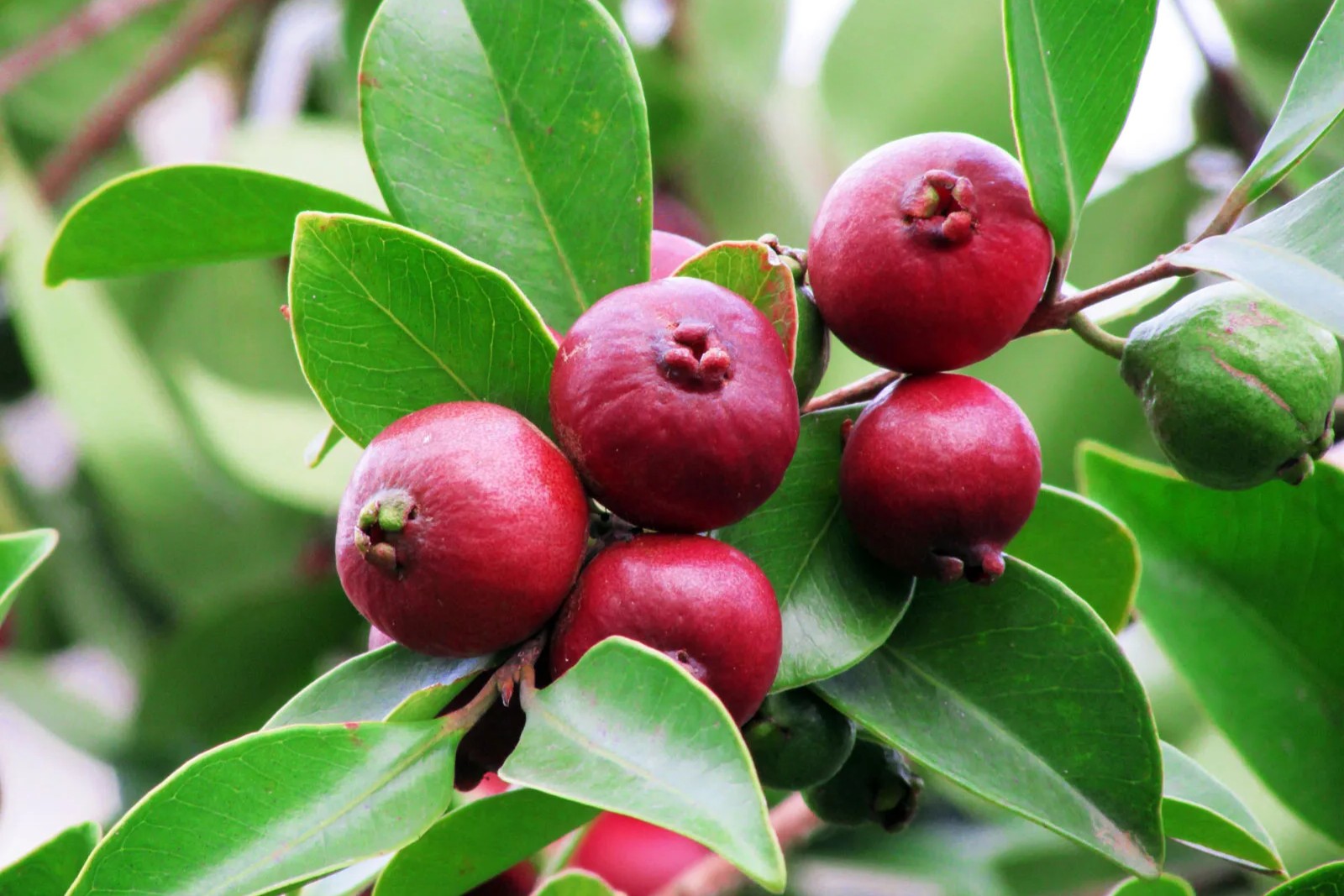
Cattley guava, also known as strawberry guava, is a tropical fruit that packs a punch with its unique flavor and numerous benefits. Native to Brazil, this small, round fruit is often overlooked but deserves a spot in your diet. Why? Because it’s loaded with vitamins, antioxidants, and fiber. Not only does it taste great, but it also supports your immune system and aids digestion. Plus, it’s versatile in the kitchen—perfect for jams, jellies, and even savory dishes. Whether you’re a fruit enthusiast or just curious, learning about Cattley guava can add a new twist to your culinary adventures. Ready to dive in? Let's explore 34 fascinating facts about this underrated gem!
What is Cattley Guava?
Cattley guava, also known as strawberry guava, is a tropical fruit that has intrigued many with its unique flavor and numerous benefits. Here are some fascinating facts about this exotic fruit.
- Cattley guava is native to Brazil, where it thrives in the wild.
- The fruit is named after William Cattley, a British horticulturist who first cultivated it in the 19th century.
- It belongs to the Myrtaceae family, which includes other well-known fruits like eucalyptus and clove.
- Cattley guava is also called "strawberry guava" due to its strawberry-like flavor and aroma.
- The fruit is small, typically about the size of a golf ball, with a smooth, red or yellow skin.
- Inside, the flesh is juicy and sweet, with numerous small seeds that are edible.
- Cattley guava trees can grow up to 20 feet tall, making them suitable for both gardens and orchards.
- The leaves of the Cattley guava tree are glossy and dark green, adding to its ornamental value.
Nutritional Benefits of Cattley Guava
This tropical fruit isn't just tasty; it's packed with nutrients that can benefit your health in various ways.
- Cattley guava is rich in vitamin C, which boosts the immune system and promotes healthy skin.
- It contains dietary fiber, aiding in digestion and preventing constipation.
- The fruit is low in calories, making it a great snack for those watching their weight.
- It also provides essential minerals like potassium and magnesium, which are vital for heart health.
- Antioxidants in Cattley guava help combat free radicals, reducing the risk of chronic diseases.
- The fruit's high water content keeps you hydrated, especially during hot weather.
- Cattley guava has anti-inflammatory properties, which can help reduce symptoms of arthritis and other inflammatory conditions.
Culinary Uses of Cattley Guava
Cattley guava is versatile in the kitchen, lending its unique flavor to a variety of dishes and beverages.
- The fruit can be eaten fresh, straight off the tree.
- It makes a delicious addition to fruit salads, adding a burst of flavor and color.
- Cattley guava can be used to make jams and jellies, perfect for spreading on toast.
- The fruit can be blended into smoothies, providing a tropical twist.
- It can be used in baking, adding moisture and sweetness to cakes and muffins.
- Cattley guava pairs well with savory dishes, such as grilled meats and seafood.
- The fruit can be fermented to make a unique, fruity wine.
Growing Cattley Guava
Interested in growing your own Cattley guava? Here are some tips to get you started.
- Cattley guava trees prefer well-drained soil and a sunny location.
- They are relatively drought-tolerant but benefit from regular watering during dry periods.
- The trees can be grown from seeds, but grafting or using cuttings is more reliable for producing fruit.
- Cattley guava trees are resistant to many pests and diseases, making them low-maintenance.
- Pruning helps maintain the tree's shape and encourages fruit production.
- The trees can be grown in containers, making them suitable for small gardens or patios.
- Cattley guava trees can tolerate light frost, but prolonged cold can damage the fruit and foliage.
Environmental Impact of Cattley Guava
While Cattley guava has many benefits, it also has some environmental considerations.
- In some regions, Cattley guava is considered an invasive species, outcompeting native plants.
- The fruit attracts wildlife, such as birds and mammals, which can help spread its seeds.
- Invasive Cattley guava can alter local ecosystems, affecting biodiversity.
- Managing its spread involves regular monitoring and removal of unwanted plants.
- Despite its invasive potential, Cattley guava can be grown responsibly with proper care and management.
Final Thoughts on Cattley Guava
Cattley guava, also known as strawberry guava, is a fascinating fruit with a rich history and numerous benefits. This small but mighty fruit is packed with vitamins, antioxidants, and fiber, making it a healthy addition to any diet. Its unique flavor, a blend of strawberry and guava, makes it a favorite in jams, jellies, and desserts. Beyond its culinary uses, cattley guava trees are also valued for their ornamental beauty and hardiness. They can thrive in various climates and are relatively easy to grow, making them a popular choice for home gardeners. Whether you're interested in its health benefits, culinary potential, or gardening appeal, cattley guava is a fruit worth exploring. So next time you come across this vibrant fruit, give it a try and enjoy all the goodness it has to offer.
Was this page helpful?
Our commitment to delivering trustworthy and engaging content is at the heart of what we do. Each fact on our site is contributed by real users like you, bringing a wealth of diverse insights and information. To ensure the highest standards of accuracy and reliability, our dedicated editors meticulously review each submission. This process guarantees that the facts we share are not only fascinating but also credible. Trust in our commitment to quality and authenticity as you explore and learn with us.
